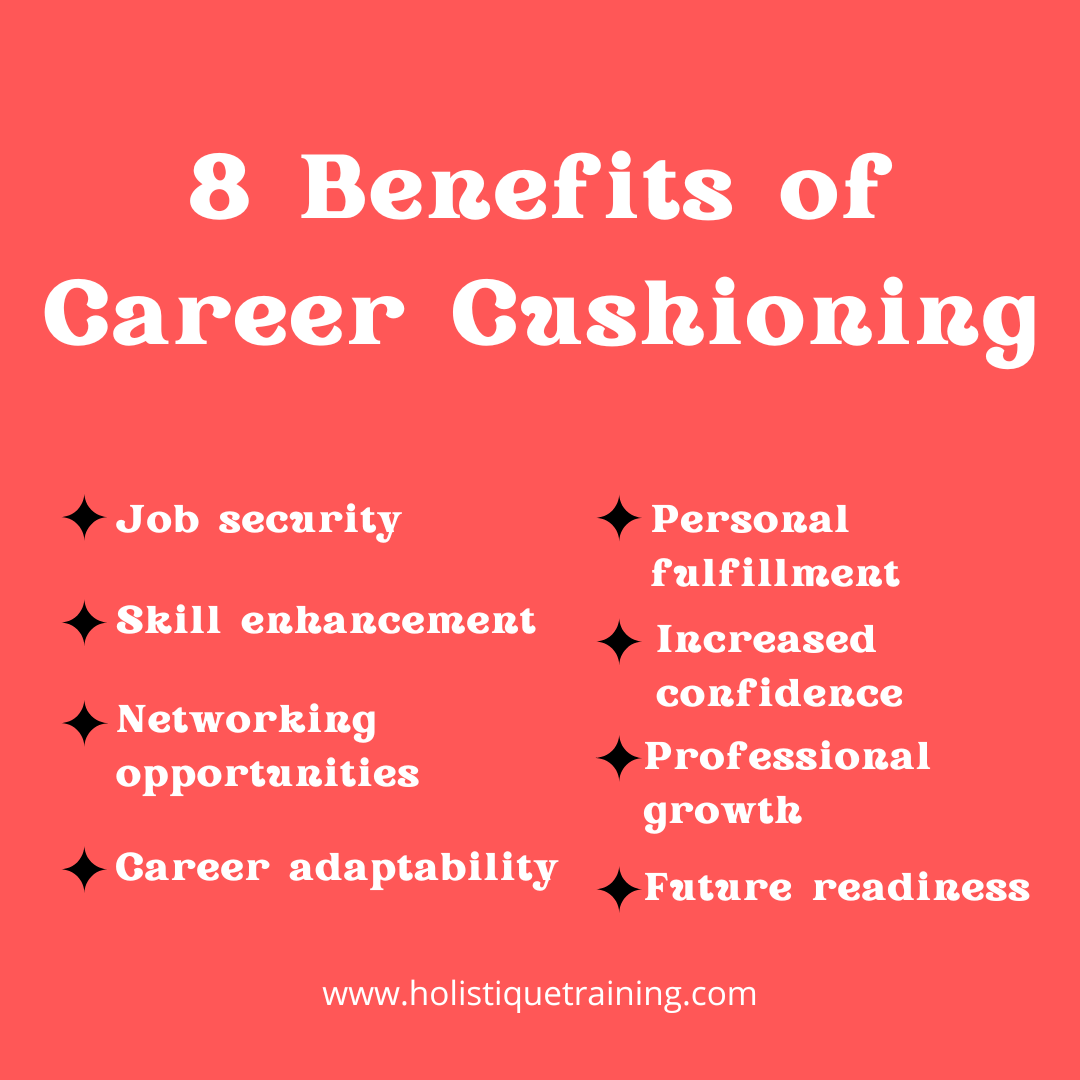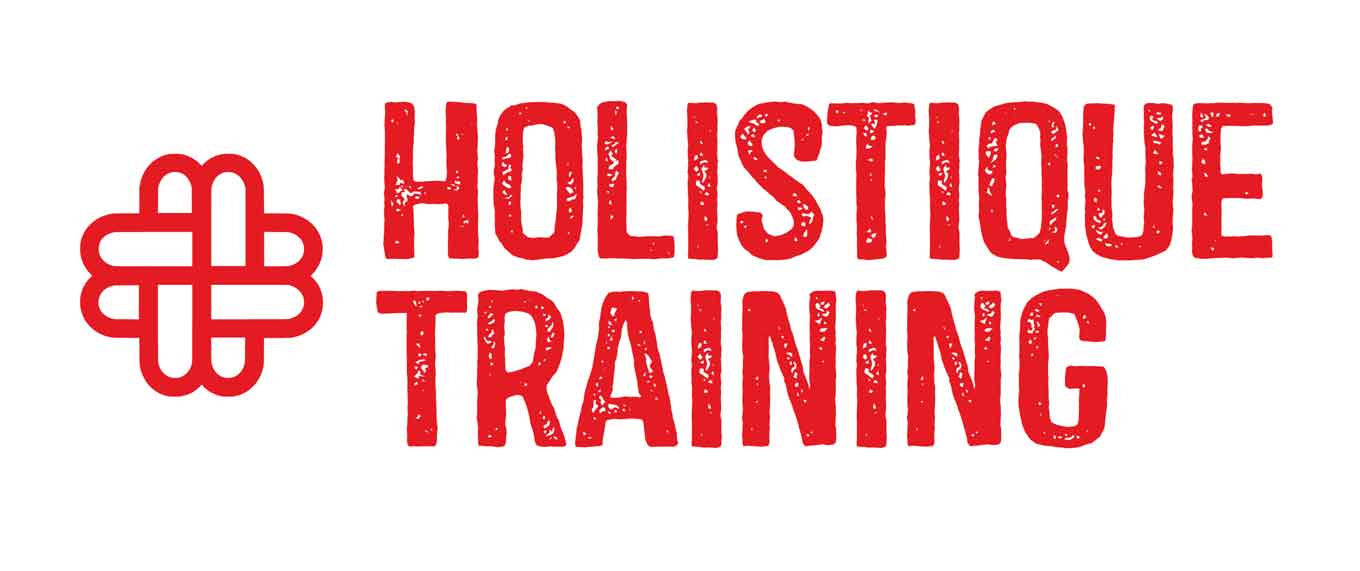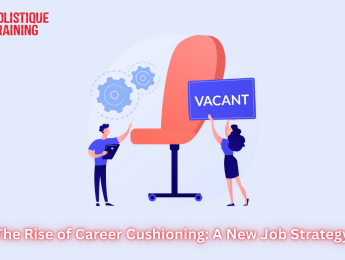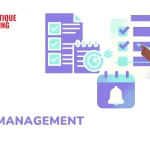- Table of Contents
- Introduction
- What is Career Cushioning?
- Career Cushioning & Job Cuffing: What Are the Differences?
- Career Cushioning
- Job Cuffing
- Why is Career Cushioning Important Today?
- Economic Uncertainty
- Technological Advancements
- Changing Work Environments
- Increased Competition
- Evolving Employee Expectations
- The Importance of Networking
- Signs That You Should Start Career Cushioning
- 1. Job Market Instability
- 2. Lack of Career Development Opportunities
- 3. Feelings of Stagnation
- 4. Industry Changes
- 5. Personal Goals and Aspirations
- 6. Feedback from Peers and Supervisors
- 7. Changes in Personal Circumstances
- 8. Desire for Greater Work-Life Balance
- Steps to Cushion Your Career
- 1. Assess Your Current Skills
- 2. Set Clear Career Goals
- 3. Invest in Continuous Learning
- 4. Build a Diverse Network
- 5. Explore Side Projects
- 6. Stay Informed About Industry Trends
- 7. Seek Mentorship
- 8. Embrace Flexibility
- 9. Document Your Achievements
- 10. Regularly Evaluate Your Career Strategy
- Conclusion
Introduction
The modern workplace is evolving at an unprecedented pace, influenced by technological advancements, shifting economic landscapes, and changing employee expectations. Amid this dynamic environment, professionals are increasingly recognizing the need for proactive strategies to safeguard their careers. One such strategy that has gained traction is "career cushioning." This blog post delves into the concept of career cushioning, exploring its significance, distinguishing it from similar concepts like job cuffing, and providing practical steps for implementation. By the end of this post, readers will understand how to effectively cushion their careers to navigate uncertainties and seize opportunities in an ever-changing job market.
What is Career Cushioning?
Career cushioning refers to the practice of taking proactive steps to protect and enhance one’s career prospects in anticipation of potential job instability or changes within the workplace. This concept encompasses a variety of strategies aimed at ensuring that individuals remain competitive and adaptable, regardless of external circumstances. Career cushioning can involve upskilling, networking, diversifying one’s professional portfolio, or even exploring side projects that align with personal interests and market demands.
At its core, career cushioning is about resilience. It encourages professionals to cultivate a mindset that embraces continuous learning and adaptability, equipping them with the tools needed to navigate career transitions smoothly. This approach acknowledges that job security is no longer guaranteed, and instead of waiting for a crisis to occur, individuals take proactive measures to prepare themselves for whatever lies ahead.
Career Cushioning & Job Cuffing: What Are the Differences?
While career cushioning and job cuffing may sound similar, they represent distinct concepts in the realm of career management. Understanding these differences is crucial for professionals seeking to navigate their career paths effectively.
Career Cushioning
As previously defined, career cushioning is about preparing for potential job instability by enhancing skills, building networks, and exploring alternative career options. It is a forward-thinking strategy focused on resilience and adaptability. Individuals engaging in career cushioning actively seek opportunities to grow and diversify their professional skill sets, making them more marketable in various job markets.
Job Cuffing
Conversely, job cuffing refers to a more reactive approach. It typically occurs when professionals feel insecure about their current job situation and choose to stay in a position out of fear of the unknown or financial instability. This often leads to a lack of motivation and engagement, as individuals may remain in roles they do not find fulfilling simply to maintain a paycheck.
Aspect | Career Cushioning | Job Cuffing |
Definition | Proactively developing skills and networks to enhance career resilience. | Staying in a job primarily for security, often without enthusiasm. |
Focus | Long-term career growth and adaptability in a changing market. | Short-term job security, often at the expense of personal satisfaction. |
Approach | Engaging in continuous learning, networking, and skill enhancement. | Minimal effort in professional development; primarily focused on job retention. |
Mindset | Growth-oriented; seeks opportunities for advancement and fulfillment. | Risk-averse; prioritizes immediate stability over career aspirations. |
Outcome | Greater career mobility, satisfaction, and preparedness for change. | Potential stagnation and dissatisfaction, with limited career progression. |
In essence, while career cushioning is about proactive preparation and growth, job cuffing is characterized by a passive acceptance of one’s current situation due to fear or uncertainty. Understanding this distinction is vital for individuals seeking to take charge of their careers, as it highlights the importance of adopting a proactive mindset rather than succumbing to complacency.
Why is Career Cushioning Important Today?
An article in Strategic Finance (2023), as cited by Medium, emphasizes the remarkable surge in interest surrounding career cushioning. The importance of it cannot be overstated in today’s rapidly changing job market. In fact,a survey by Robert Walters reveals that68% of employees in the United States are currently practicing career cushioning.Several factors contribute to the growing relevance of this concept:
Economic Uncertainty
Global economic fluctuations have become a common reality, often resulting in unexpected job losses and shifts within various industries. Events such as recessions, market crashes, or even geopolitical tensions can create instability that affects job security. For instance, the COVID-19 pandemic dramatically altered the employment landscape, leading to mass layoffs and hiring freezes across numerous sectors. Here are some statistics mentioned byHubSpot: In January 2024, approximately 3 million people lost their jobs or completed temporary positions in the U.S., with over 42,000 employees laid off so far this year, including more than 160 tech companies. Additionally, the monthly inflation rate for goods and services in the U.S. rose by 3.1% compared to January 2023. By engaging in career cushioning, individuals can better prepare themselves to pivot to new opportunities when faced with such economic challenges. This proactive approach not only mitigates the impact of job loss but also allows professionals to remain agile in their career paths, adapting to new roles or industries as needed.
Technological Advancements
The rapid pace of technological change has transformed the skills required in many industries, making continuous learning imperative. Automation, artificial intelligence, and emerging technologies are reshaping job roles, often rendering certain skills obsolete while creating demand for new ones. For example, jobs that once relied heavily on manual processes are increasingly being automated, necessitating a workforce that is proficient in digital tools and data analysis. Career cushioning encourages individuals to embrace lifelong learning, ensuring they remain relevant in their fields. By proactively seeking out training and upskilling opportunities, professionals can position themselves as valuable assets in a technology-driven job market.
Changing Work Environments
The shift towardsremote work and flexible job arrangements has become a defining characteristic of the modern workplace. Organizations are rethinking traditional office setups and adapting to new ways of working, which can lead to changes in job expectations and employee roles. For instance, remote work requires different skills, such as effective virtual communication and self-management. As companies continue to evolve in response to employee preferences and technological advancements, professionals must also be prepared to navigate these changes. Career cushioning helps individuals build the adaptability needed to thrive in diverse settings, whether that means adjusting to hybrid work models or developing skills for virtual collaboration.

Increased Competition
With the rise of remote work, professionals now compete not just with local candidates but also with individuals from around the globe. This increased competition makes it essential for individuals to differentiate themselves through unique skills and experiences. For example, a graphic designer in one country may find themselves competing for jobs against talented designers from another part of the world, all vying for the same remote position. Career cushioning allows professionals to cultivate a diverse skill set that enhances their appeal to potential employers. By continuously improving their qualifications and expanding their professional network, individuals can stand out in a crowded job market and increase their chances of securing desirable positions.
Evolving Employee Expectations
Today’s workforce has different expectations than previous generations, with a greater emphasis on work-life balance, job satisfaction, and career fulfillment. Employees are more likely to seek roles that align with their values and offer opportunities for personal and professional growth. As a result, organizations must adapt to these changing expectations to attract and retain talent. Career cushioning empowers individuals to take charge of their career paths, ensuring that they seek out roles and opportunities that resonate with their personal goals. By actively managing their careers, professionals can pursue positions that not only provide financial stability but also contribute to their overall happiness and job satisfaction.
The Importance of Networking
In an interconnected world, networking plays a critical role in career advancement. The ability to connect with others in your industry can lead to new opportunities, mentorship, and insights into emerging trends. Career cushioning emphasizes the importance of building and maintaining a diverse professional network. By engaging with peers, attending industry events, and participating in online communities, individuals can expand their horizons and uncover potential career paths they may not have considered otherwise. A strong network can serve as a safety net during uncertain times, providing support and guidance as professionals navigate their careers.
In summary, career cushioning is vital in today’s job market due to economic uncertainties, technological advancements, changing work environments, increased competition, evolving employee expectations, and the significance of networking. By adopting a proactive approach to career management, individuals can equip themselves with the skills and resources necessary to navigate the complexities of their professional journeys. Embracing career cushioning not only enhances job security but also fosters a sense of empowerment and fulfillment in one’s career. As the landscape continues to shift, those who prioritize career cushioning will be better positioned to thrive in an ever-changing world.
Signs That You Should Start Career Cushioning
Recognizing the signs that indicate it’s time to start career cushioning is crucial for proactive career management. Here are several indicators that suggest you may need to begin this process:
1. Job Market Instability
If you notice fluctuations in your industry or hear news about layoffs, it may be time to consider career cushioning. Job market instability can manifest in various ways, such as increased layoffs in your sector, hiring freezes, or companies restructuring. For instance, during economic downturns, industries like hospitality and retail often face significant challenges. Staying informed about your industry’s health through news articles, professional associations, and market reports can provide insights into potential risks. If the signs point to instability, it’s essential to start cushioning your career by exploring new skills, networking, and considering alternative job opportunities.
2. Lack of Career Development Opportunities
If your current job lacks opportunities for growth or advancement, it may signal a need to explore new skills or roles. A stagnant work environment can lead to feelings of frustration and disengagement. For example, if you find that promotions are infrequent or that there are no clear pathways for advancement, it might be time to seek out additional training or certifications that can enhance your qualifications. Career cushioning encourages individuals to take initiative and actively seek out opportunities for professional development, whether through formal education, mentorship, or on-the-job learning experiences.
3. Feelings of Stagnation
Experiencing boredom or dissatisfaction in your current role can be a sign that it's time to pursue new challenges. When you find yourself going through the motions without feeling fulfilled, it may indicate that you need to reevaluate your career path. This feeling of stagnation can be exacerbated by a lack of new projects or responsibilities. Career cushioning encourages you to seek out new learning experiences and projects that reignite your passion for your work. This could involve volunteering for cross-departmental projects, taking on leadership roles in team initiatives, or even exploring hobbies that align with your professional interests.
4. Industry Changes
If your industry is undergoing significant transformations, whether due to technological advancements or shifts in consumer behavior, it’s essential to adapt. For example, industries like retail and media have witnessed dramatic changes due to e-commerce and digital content consumption. Career cushioning can help you stay ahead of these changes by enhancing your skill set. Keeping an eye on industry trends and emerging technologies can provide valuable insights into what skills will be in demand. Engaging in continuous education and professional development can ensure that you remain competitive and relevant in your field.
5. Personal Goals and Aspirations
If you have personal career goals that feel out of reach, it might be time to take action. Whether you aspire to move into a leadership role, switch industries, or start your own business, career cushioning allows you to strategically work toward these aspirations by developing the necessary skills and connections. Reflecting on your long-term career vision can help you identify areas where you need to grow or acquire new competencies. Setting SMART (Specific, Measurable, Achievable, Relevant, Time-bound) goals can provide a clear roadmap for your career cushioning efforts, allowing you to track your progress and stay motivated.
6. Feedback from Peers and Supervisors
Receiving constructive feedback from colleagues or supervisors can serve as a valuable indicator that it’s time to start career cushioning. If you consistently hear comments about skill gaps or areas for improvement, it’s essential to take this feedback seriously. For instance, if your manager suggests that you enhance your presentation skills or learn a new software program relevant to your role, these are clear signs that you should invest in your professional development. Career cushioning involves being open to feedback and using it as a catalyst for growth, enabling you to address weaknesses and strengthen your overall skill set.
7. Changes in Personal Circumstances
Life events, such as relocating, starting a family, or pursuing further education, can significantly impact your career trajectory. If you anticipate changes in your personal circumstances that may affect your job stability or career goals, it’s wise to start career cushioning. For example, relocating to a new city may require you to build a new professional network and explore job opportunities in a different market. By proactively preparing for these changes, you can ensure a smoother transition and minimize potential disruptions to your career.
8. Desire for Greater Work-Life Balance
If you find yourself overwhelmed by work demands and seeking a better work-life balance, it may indicate a need to reassess your career path. Many professionals today prioritize flexibility and job satisfaction, leading them to seek roles that align with their values and lifestyle preferences. Career cushioning can help you explore options that provide a healthier balance between work and personal life. This might involve seeking remote work opportunities, negotiating flexible hours, or even transitioning to a different industry that offers more alignment with your personal goals.
In summary, recognizing the signs that indicate it’s time to start career cushioning is essential for proactive career management. Job market instability, lack of growth opportunities, feelings of stagnation, industry changes, personal aspirations, feedback from peers, changes in personal circumstances, and a desire for better work-life balance are all indicators that suggest it may be time to take action. By being attentive to these signs, individuals can take proactive steps to safeguard their careers, ensuring they remain competitive and fulfilled in their professional journeys. Embracing career cushioning not only enhances job security but also empowers individuals to take charge of their career paths and pursue their passions with confidence.
Challenges of Career Cushioning | Solutions |
Time Management | Prioritize career development by scheduling dedicated time for learning and networking activities. Use tools like calendars or task management apps to stay organized. |
Financial Constraints | Seek free or low-cost resources for skill development, such as online courses, webinars, or local community workshops. Consider budgeting for professional development expenses. |
Overwhelm from Information | Focus on specific areas of interest or skills relevant to your career goals. Curate your information sources to reduce noise and prioritize quality over quantity. |
Lack of Support from Employers | Communicate your career development goals with your employer. Seek opportunities for mentorship or training programs within your organization to gain support. |
Fear of Change or Uncertainty | Embrace a growth mindset by viewing challenges as opportunities for learning. Engage in self-reflection and seek guidance from mentors to build confidence in navigating career transitions. |
Steps to Cushion Your Career
Implementing a career cushioning strategy involves several actionable steps. Here’s a comprehensive guide to help you get started:
1. Assess Your Current Skills
Self-Assessment: Begin by conducting a thorough assessment of your current skill set. Identify both your strengths and areas that may need improvement. This can include technical skills, soft skills, and industry-specific knowledge. Tools like self-assessment questionnaires, skills inventories, or even feedback from colleagues and supervisors can provide valuable insights.
Skill Gap Analysis: Once you have a clear picture of your skills, perform a gap analysis to determine which skills are in demand within your industry and which ones you may need to develop. Research job descriptions for roles you aspire to and note the required skills. This will help you create a targeted plan for your professional development.
2. Set Clear Career Goals
Define Your Objectives: Establishing clear, actionable career goals is crucial for effective career cushioning. Consider both short-term and long-term goals that align with your aspirations. For example, a short-term goal might be to complete a specific certification, while a long-term goal could involve moving into a managerial position within five years.
SMART Goals Framework: Use the SMART (Specific, Measurable, Achievable, Relevant, Time-bound) framework to ensure your goals are well-defined. This approach helps you create a roadmap for your career development and allows you to track your progress over time.
3. Invest in Continuous Learning
Lifelong Learning Mindset: Embrace a mindset of lifelong learning by actively seeking opportunities to enhance your knowledge and skills. This could involve enrolling in online courses, attending workshops, or pursuing relevant certifications. Platforms like Coursera, Udemy, and LinkedIn Learning offer a wide range of courses tailored to various industries and skill levels.
Stay Updated on Industry Trends: Regularly read industry publications, follow thought leaders, and participate in webinars to stay informed about emerging trends and technologies. This knowledge will not only help you identify areas for growth but also position you as a knowledgeable professional in your field.
4. Build a Diverse Network
Networking Strategy: Networking is a crucial aspect of career cushioning. Develop a strategic networking plan that includes both online and offline approaches. Attend industry events, join professional organizations, and engage in discussions on platforms like LinkedIn to expand your professional connections.
Cultivate Relationships: Focus on building genuine relationships rather than simply collecting contacts. Take the time to connect with peers, mentors, and industry leaders. Offer assistance, share insights, and engage in meaningful conversations. A strong network can provide support, advice, and potential job opportunities during uncertain times.
5. Explore Side Projects
Pursue Passion Projects: Consider taking on side projects that align with your interests and career goals. This could involve freelancing, volunteering, or starting a small business. Side projects not only enhance your skills but also demonstrate your initiative and creativity to potential employers.
Portfolio Development: Use side projects to build a robust portfolio that showcases your capabilities. Having tangible examples of your work can set you apart from other candidates when applying for new roles or seeking promotions.
6. Stay Informed About Industry Trends
Regular Research: Dedicate time each week to research and stay updated on industry trends, technological advancements, and market shifts. Subscribe to industry newsletters, follow relevant blogs, and participate in online forums to gain insights into the direction your field is heading.
Engage with Thought Leaders: Follow industry experts and thought leaders on social media platforms. Engaging with their content can provide valuable perspectives and help you stay ahead of emerging trends. Participating in discussions or commenting on their posts can also enhance your visibility within your professional community.
7. Seek Mentorship
Find a Mentor: Identifying a mentor can provide invaluable guidance and support as you navigate your career. A mentor can share insights based on their experiences, help you identify opportunities for growth, and offer constructive feedback on your career development.
Establish a Mentorship Relationship: Approach potential mentors with a clear request for guidance. Be specific about what you hope to gain from the relationship and how you can contribute in return. Regular check-ins and open communication are essential for maintaining a successful mentorship.
8. Embrace Flexibility
Adopt an Agile Mindset: Be open to new opportunities and willing to pivot when necessary. Flexibility is a key component of career cushioning, allowing you to adapt to changing circumstances and seize unexpected chances for advancement.
Explore Diverse Roles: Consider exploring roles outside your immediate job description or industry. This openness can lead to new experiences and skill development that may enhance your overall career prospects. For example, if you work in marketing, you might explore opportunities in sales or product management to broaden your skill set.
9. Document Your Achievements
Keep a Career Journal: Maintain a record of your accomplishments, skills acquired, and projects completed. This documentation will not only serve as a reminder of your growth but also provide valuable material for performance reviews, job applications, and networking conversations.
Prepare for Future Opportunities: Regularly update your resume and online profiles (e.g., LinkedIn) with your latest achievements and skills. Being prepared will allow you to respond quickly to new job opportunities or networking requests, ensuring you’re always ready to showcase your value.
10. Regularly Evaluate Your Career Strategy
Periodic Check-Ins: Schedule regular check-ins to evaluate your career strategy and progress toward your goals. Reflect on what’s working, what isn’t, and where adjustments may be necessary. This ongoing evaluation will help you stay aligned with your career aspirations and adapt to any changes in your circumstances.
Be Open to Change: As your career progresses, your goals and priorities may evolve. Stay open to reassessing your aspirations and adjusting your career cushioning strategy accordingly. Flexibility and adaptability are essential in today’s dynamic job market.
In summary, implementing a career cushioning strategy involves a series of proactive steps designed to enhance your professional resilience and adaptability. By assessing your skills, setting clear goals, investing in continuous learning, building a diverse network, exploring side projects, staying informed about industry trends, seeking mentorship, embracing flexibility, documenting achievements, and regularly evaluating your strategy, you can effectively cushion your career against uncertainties. This proactive approach not only enhances your job security but also empowers you to pursue your passions and achieve your long-term career aspirations. Embracing career cushioning is not just about surviving in a competitive job market; it’s about thriving and finding fulfillment in your professional journey.
Conclusion
Career cushioning is an essential strategy for professionals navigating the complexities of today’s job market. By understanding the concept, recognizing its importance, and implementing proactive steps, individuals can safeguard their careers against uncertainties while positioning themselves for future growth. As the workplace continues to evolve, embracing a mindset of resilience and adaptability will empower professionals to thrive in any environment. Whether through continuous learning, networking, or exploring new opportunities, career cushioning equips individuals with the tools they need to navigate their professional journeys confidently. Ultimately, taking charge of one’s career trajectory is not just a necessity; it is a pathway to fulfillment and success in an ever-changing world.

























